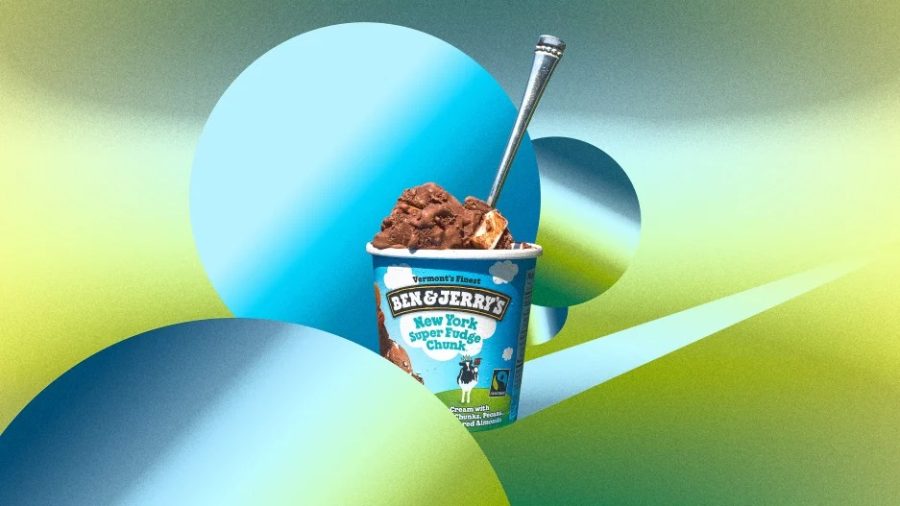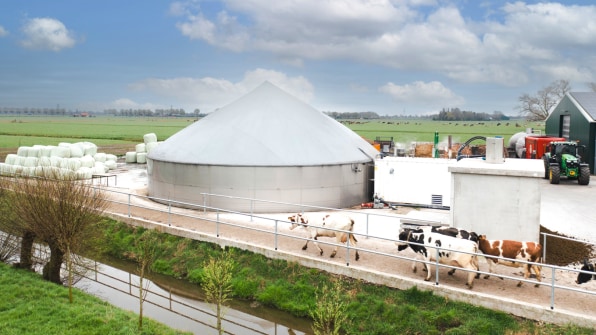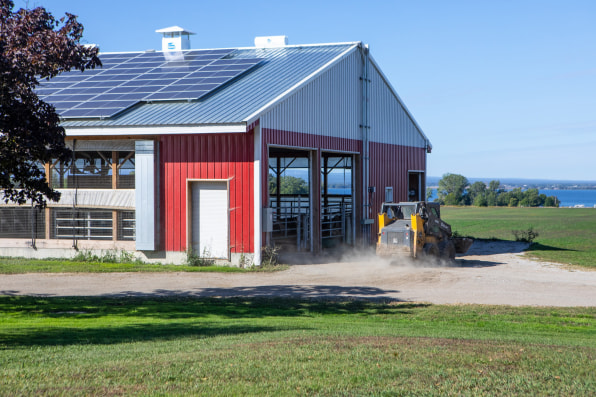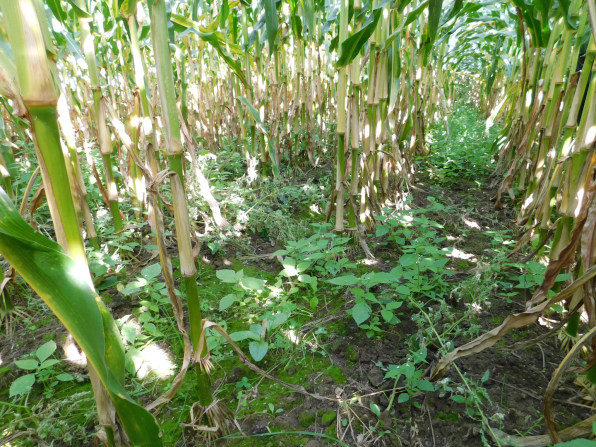- | 8:55 am
Ben & Jerry’s is cutting the carbon footprint of your ice cream
More than half of the company’s carbon footprint comes from producing dairy ingredients. It’s hoping to change that.

At a dairy farm in Vermont that supplies milk for Ben & Jerry’s ice cream, cows will begin eating a small amount of red seaweed later this year. The supplement can help cut the emissions from cow burps—one of the largest parts of the carbon footprint of dairy—by more than 80%, in some cases. It’s one of a suite of changes that Ben & Jerry’s is now making in a pilot program with 15 farms, dubbed Project Mootopia, aimed at taking on its climate impact. More than half of the company’s carbon footprint comes from the dairy ingredients it buys.

This digester on a family farm in Spierdijk, Netherlands, turns manure into gas—enough to power 8 neighboring houses. [Photo: Yaron Bindles/courtesy Ben & Jerry’s]
The ice cream company has worked with its suppliers to help improve sustainability in the past, including asking farmers to adopt “regenerative” agriculture practices like cover cropping, which may help sequester more carbon in the soil. But until the new pilot, “we’ve never really been able to look at dairy-farm emissions holistically,” says Jenna Evans, global sustainability manager for Ben & Jerry’s. Part of the challenge was that there wasn’t a good solution for dealing with the methane that cows naturally produce when they burp. But that’s changing; companies like Blue Ocean Barns, which is working with the brand on a seaweed trial beginning later this year, are introducing new supplements that could make a difference.The pilot, with the goal to help cut emissions in half on farms, is taking place in both Vermont and the Netherlands, near Ben & Jerry’s European ice cream factory. The company is helping farmers adopt new technology like methane digesters, which use bacteria to process the methane from manure—another major source of dairy emissions—and generate both fertilizer and electricity that can be sold back to Vermont’s electric grid.

Sunset Lake Farm in Alburgh, Vermont, is participating in Ben & Jerry’s Project Mootopia. The farm is reducing its energy costs and carbon footprint by using solar panels on the barn. [Photo: courtesy Ben & Jerry’s]
While the company isn’t paying to install the new equipment, it is paying farmers for the service of “methane destruction,” or the benefit that the brand is getting as its carbon footprint shrinks. It’s also helping give farmers the technical support to make the changes. Energy consultants, for example, are calculating the payback period for investing in the new equipment. The company is also helping farms install new renewable energy, make changes in their pastures to support biodiversity, and increase local forage production so less grain has to be shipped long distances to the farms.

Ben & Jerry’s new pilot project will look at the effect of interseeded biodiverse cover cropping and growing slightly fewer stalks to allow more sunlight to reach the plants. [Photo: courtesy Ben & Jerry’s]
“We’re working really collaboratively with the farms to try to see what works because we don’t know what will stick or what will make sense financially,” Evans says. The changes will take time. Seaweed supplements for cows, for example, aren’t yet widely available, though they were recently approved for use in California by the California Department of Food and Agriculture, and Blue Ocean Barns is scaling up production; the Vermont farm that will use the supplements later this year will be part of a commercial demonstration. (Though one study has questioned the safety of using seaweed, arguing that the bromoform it contains can end up in milk; Evans says that the study used larger quantities of seaweed than its farmers will use, and other studies have concluded that it’s safe.)The various solutions in the pilot all help to directly reduce the emissions from dairy, something that Evans says is required for the company to meet its science-based climate targets. “I can’t go purchase carbon offsets from a forestry project in Panama that has nothing to do with making ice cream—I have to make direct reductions in our ice cream supply chain,” she says.
As the pilot progresses over the next two years, the company plans to scale up the solutions that work to the rest of the farms in its supply chain. It also plans to share those solutions with others in the dairy industry. “We want to be really transparent in this project so that other brands can learn as we’re learning; and so, that we will take the most successful and feasible practices forward,” says Evans.






































